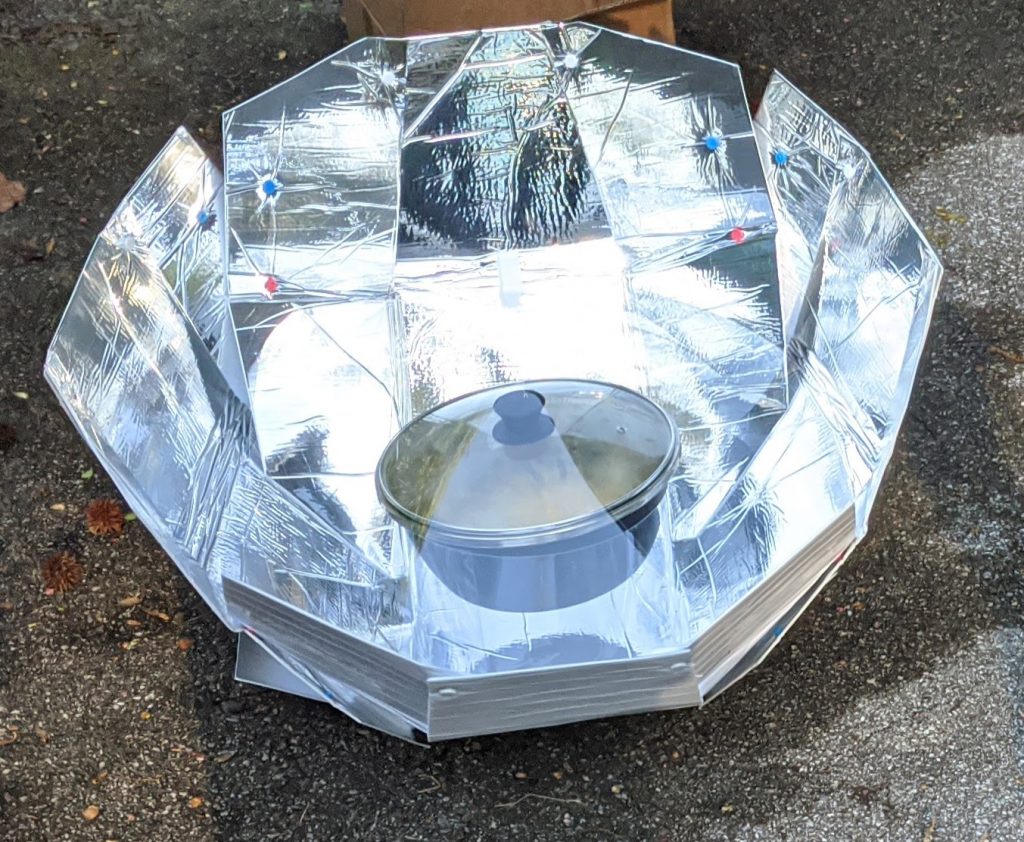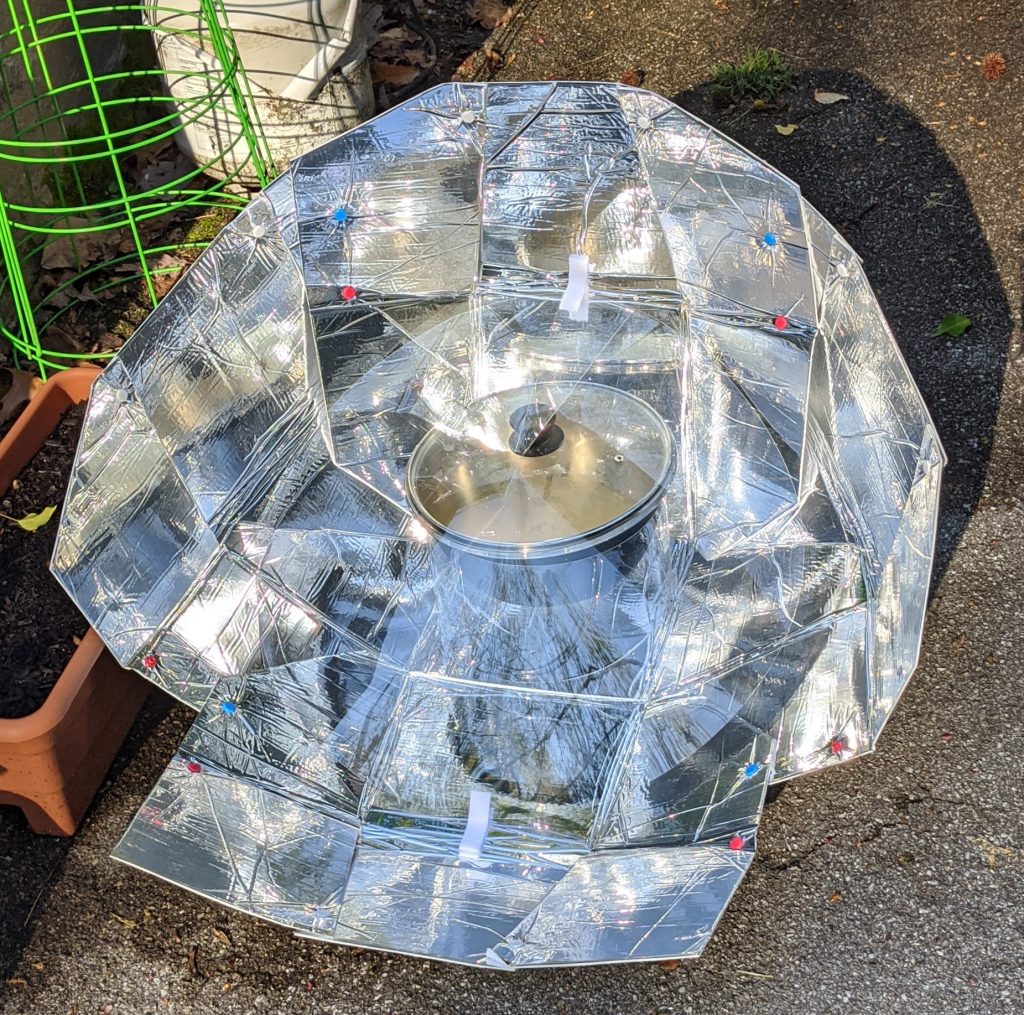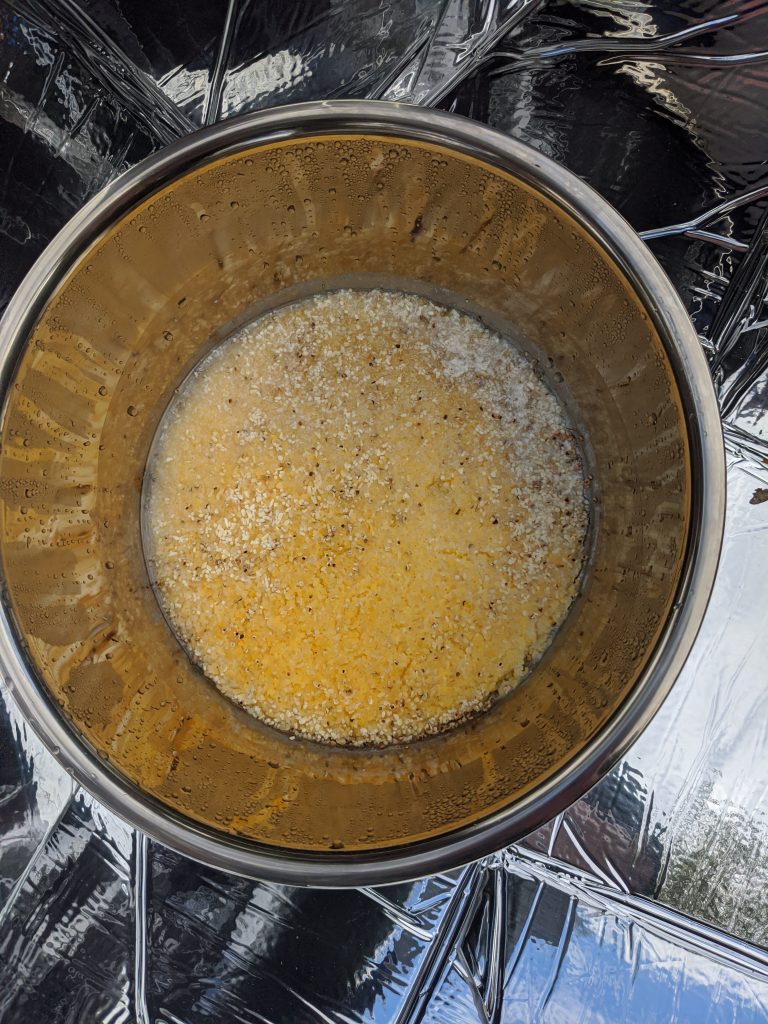
Last week I decided to experiment with the Haines 2.0 Solar Cooker & Dutch Oven Set. This week I thought I’d try both the Haines and the GoSun Sport.
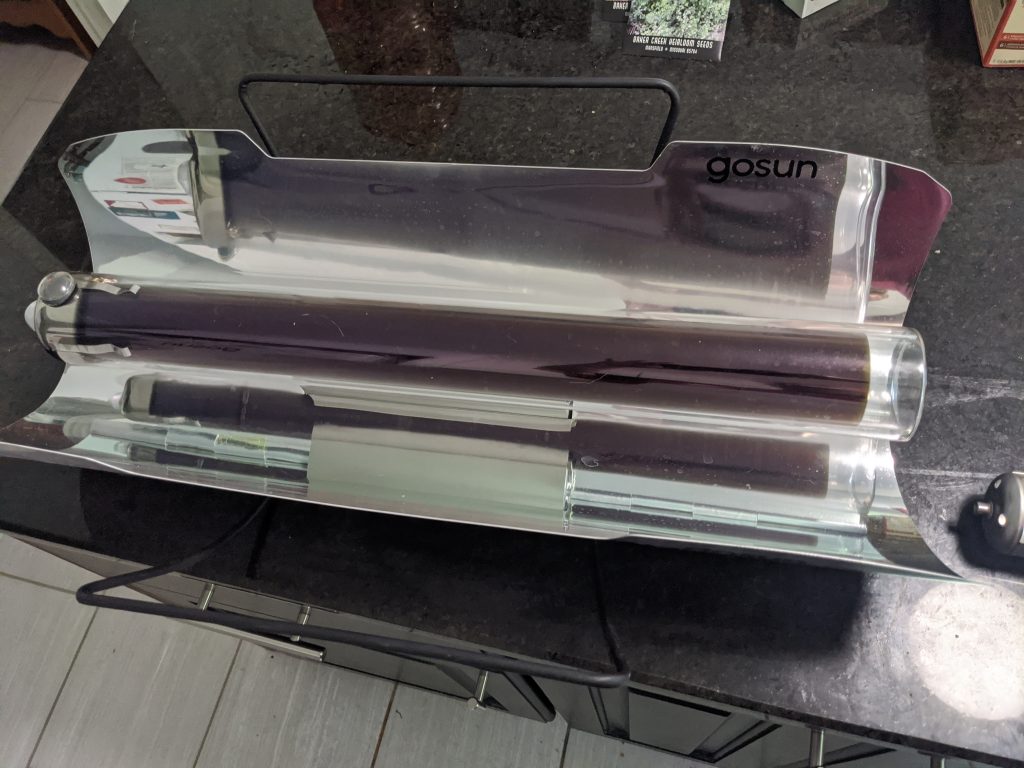
GoSun is the top of the line when it comes to solar cooking. When I first started looking into solar cookers around a decade ago, I seem to remember them making things that looked a lot more like the Haines. Then a few years back they started selling solar cookers with this black vacuum tube surrounded by metal reflectors. They now have a variety of sizes. I’ve got kind of the middle-range one, the GoSun Sport. The tray that slides into the vacuum tube is narrow, but holds enough food for me and my hubby. I’ve used the GoSun a couple of times before, so I know it’s a little difficult to clean if things get stuck on it. I recently bought some of GoSun’s tray liners. It’s basically just parchment paper that’s been cut very narrowly.
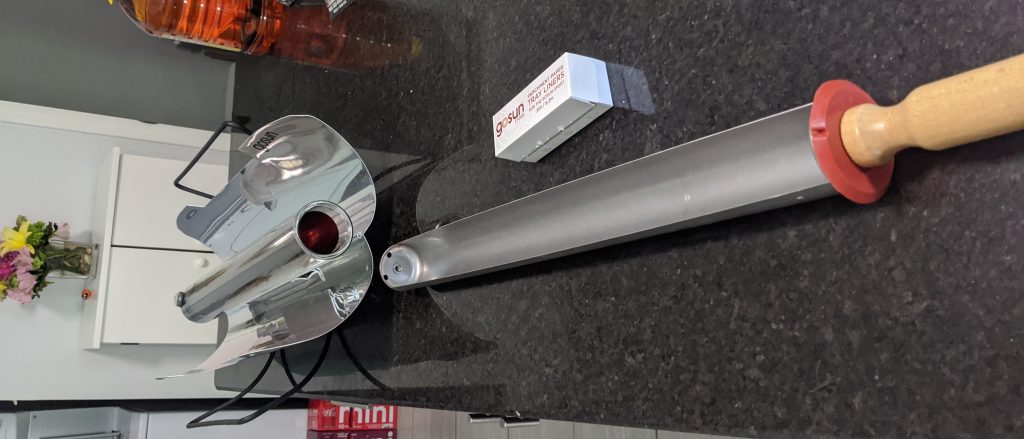
I really like the GoSun company. They are helping people in developing countries use the power of the sun to replace less sustainable, dirty fuel sources, such as wood or fossil fuels. They also now have solar powered coolers, solar lights, and a variety of solar panel options to charge small devices.
The GoSun is kind of like the superhero of solar cookers. Its strength is that it cooks really fast compared to the other solar cookers. Its weakness is that once the glass vacuum tube has warmed up in the sun you can’t put a cold tray in it, especially if it’s got liquid in it. I once watched an episode of America’s Next Top Chef where they used GoSuns and one shattered when one of the chefs put something wet in it while it was hot. The GoSun Sport comes with two trays, but I’ve never tried switching them out once the tube is hot. I read on an a forum that some folks let their second tray sit in the sun to warm up before switching the trays. I haven’t tried doing it yet, so I’m not recommending it at this point.
Anyhow, today I decided to make quinoa in the Haines and pork tenderloin in the GoSun. I got the pork tenderloin at a local butcher shop and chose it specifically for its long, narrow shape. Other cuts of meat would work too, but they may have to be cut to fit the tray. The tenderloin didn’t take up the whole tray, so I filled the rest of it with mini red potatoes, carrots and green onions. The quinoa and the pork tenderloin were seasoned with Moroccan Res El Hanout seasoning, while I seasoned the veggies with za’atar. I guess I was missing Middle Eastern flavors today.
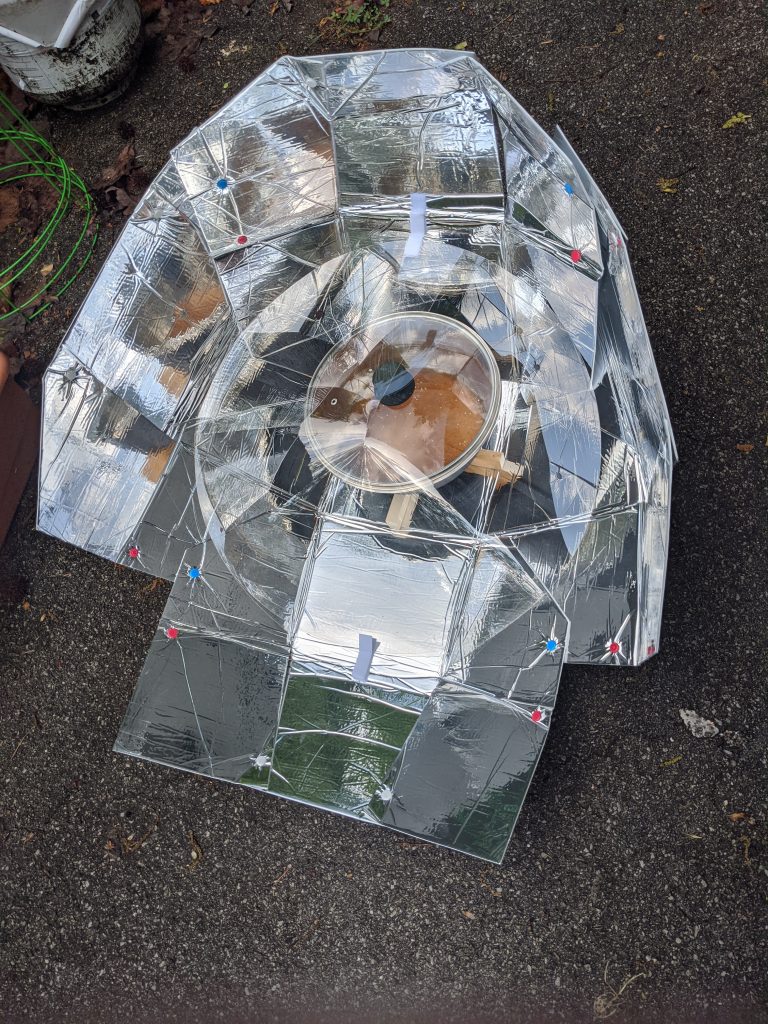
Knowing that my hubby takes his lunch break at noon, I put the quinoa on the Haines cooker at 10:00 am. I had mixed 2 cups of veggie broth with one cup of quinoa, some salt and the Ras El Hanout. I wasn’t sure if it would be done in time, but if it wasn’t ready for lunch I figured we could have it for dinner.

I set out the tenderloin & veggies at 11:00 am. The GoSun cooks faster than the Haines, so I knew it would have our lunch done in time. The GoSun has a little device on it that helps you find the best position so that it gets the most sun. Once I had the GoSun positioned correctly, I repositioned the Haines to mirror it. Soon after I realized that the quinoa was actually simmering. I didn’t see that with the polenta last week. Maybe I didn’t have it positioned correctly.

At noon I used a digital thermometer to check the pork and it was a perfect 165 degrees. The quinoa also appeared perfectly cooked. I brought the whole GoSun inside and the Dutch oven from the Haines. I dished up the quinoa and veggies while the pork rested a few minutes. Then I sliced up the pork and served us up a delicious meal without using a bit of electricity or gas and I didn’t have to heat up my house!
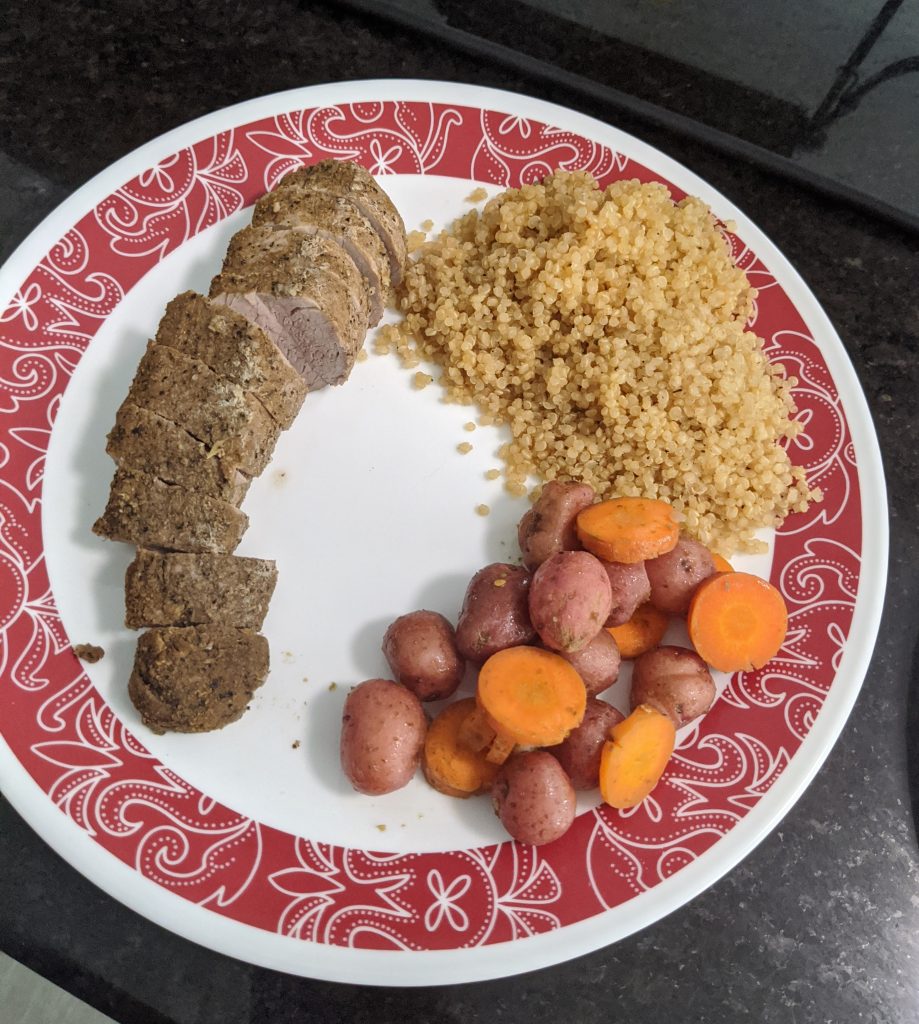
Our house is situated between two tall hills, so we have limited hours of direct sun. This means that I can really only prepare lunches with my solar cookers, at least until summer. Solar cookers work through cloud cover, but not in the shade. From what I’ve read, solar cookers even work in cold temperatures, they just take longer.
I am going to start planning out our lunches so that I’m using one or both of our solar cookers more often while we’re working from home. That should save us a little money and it’s better for the environment. We don’t know what the world is going to look like after Covid-19. I’m really hoping we come out of this with a more equitable world, one that is more sustainable. If that future is to come we have to start utilizing renewable energy sources, such as solar power. Solar cooking will have to be part of that future. That future starts with us and it has to start now.
